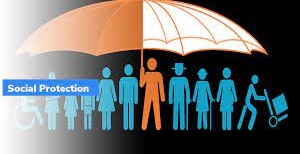
Recently, a International Labour Organization report titled ‘World Social Protection Report 2020–22’ has revealed that, globally 4.1 billion people are living without any social safety net of any kind.
- The report highlighted that the pandemic response was uneven and insufficient. Thereby, Covid-19 has further underscored the critical importance of achieving universal social protection.
- ILO is a specialized agency of the United Nations. It is the only tripartite UN agency. It brings together governments, employers and workers of 187 member States, to set labour standards, develop policies and devise programmes promoting decent work for all women and men.
Key Findings of report
- As per report, more than half of the world population are not getting any form of social protection. This trend of no social protection is there even after expansion of social protections amidst the global outbreak of COVID-19.
- Only 47 per cent of the global population had effective access to one social protection benefit, in 2020 while 53 per cent (4.1 billion people) had no protection at all.
- People in Europe and Central Asia are among the best covered population. 84 per cent of populations in Europe and Central Asia are having access to at least one benefit.
- In America, the rate of social protection is 64.3 per cent.
- In Asia, the Pacific and the Arab States, lesser than half of people are covered under protection.
- In Africa, only 17.4 per cent of the people are getting at least one social protection.
- Most children across the globe had no social protection.
- Just one in four children in the world get a social protection benefit.
- 45 per cent of women with new-borns receive cash maternity benefit.
- One in three people with severe disabilities receive disability benefits.
- One in five people worldwide are covered in case they lose their job.
Rich Poor divide
This report examined the impact COVID-19 pandemic on social protection. It found, an additional spending required to ensure minimum social protection for all and reduce the financing gap has increased by 30 per cent since the start of the pandemic. On an average, countries spend approximately 13 per cent of GDP on social protection. However, high-income countries spend 16.4 per cent of GDP on social protection. On the other hand, low-income countries spend just 1.1 per cent.
Social Protection
Social protection comprises of access to healthcare and income security in cases of unemployment, old age, inability to work, and for families with children.





